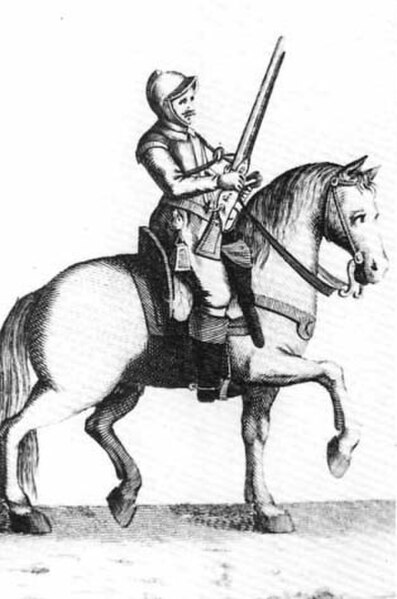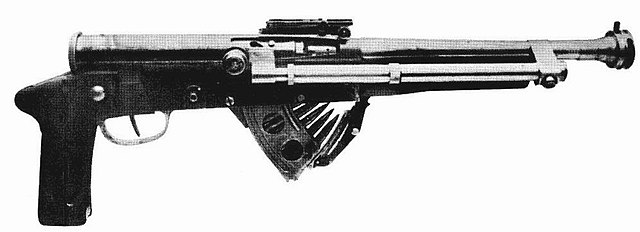The harquebusier was the most common form of cavalry found throughout Western Europe during the early to mid-17th century. Early harquebusiers were characterised by the use of a type of carbine called a "harquebus". In England, harquebusier was the technical name for this type of cavalry, though in everyday usage they were usually simply called 'cavalry' or 'horse'. In Germany they were often termed Ringerpferd, or sometimes Reiter, in Sweden they were called lätta ryttare.
Harquebusier, carbine-armed cavalry, 17th century
Gustavus Adolphus (centre) leading a mixed-cavalry charge, c. 1632. Painting by Jan Martszen de Jonge, 1634
Snaphaunce carbine, c. 1660s
English-made very high quality harquebusier armour of Pedro II of Portugal: an engraved cuirass, bridle-hand gauntlet, buff coat, and 3-barred lobster tailed pot helmet
A carbine is a long gun that has a barrel shortened from its original length. Most modern carbines are rifles that are compact versions of a longer rifle or are rifles chambered for less powerful cartridges.
An M4 carbine, a common AR-15–style carbine. The M4 is the shorter, lighter carbine variant of the M16 rifle.
Harquebusier, carbine-armed cavalry, 17th century
Carbine model 1793, used by the French Army during the French Revolutionary Wars
Chauchat-Ribeyrolles







